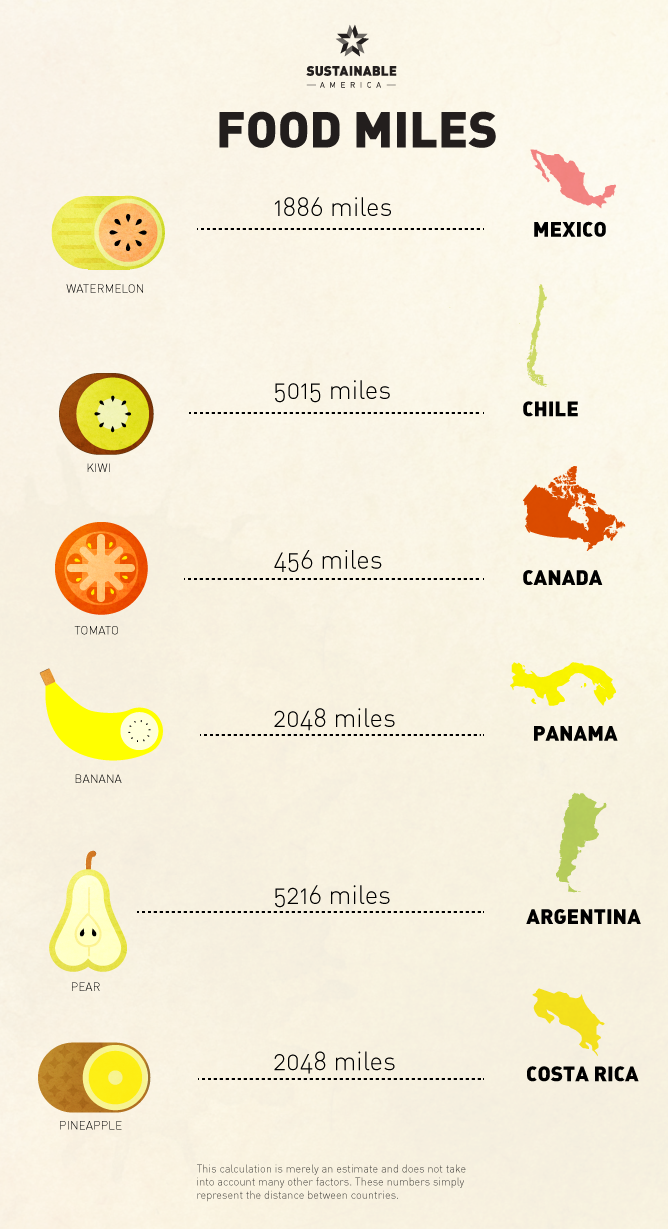
Pineapples in Hawaii that were grown in Costa Rica, apples in New York City that came from California, the sushi on your plate in Las Vegas flown in from Japan. These days most of our food travels the world before it reaches a plate. Just like humans, who rack up a big carbon footprint when they travel anywhere, our food is racking up some mileage.
This is courtesy of transportation systems that have arisen during the recent era of cheap and available oil. With Peak Oil potentially bringing the current energy rich era to a slower pace, it’s important to start considering the miles your food has to travel in order to reach your dinner table.
Some groups have advocated labeling that would show the amount of miles a certain product traveled to its final destination, known as food miles. There are even some online food miles calculators. But labeling has yet to catch on, and is not without its own debates.
Some scientists would prefer that all aspects of production be taken into account when calculating food’s carbon footprint. This would include all the fuel inputs and waste produced during the growing process so that food with more additives like fertilizers and pesticides would have higher ratings while organically grown food with less machine and chemical input would have lower rates even if they traveled the same distance to the supermarket.
The truth is, our food systems today are complex, complicated and deeply intertwined with our petroleum based fuel economy. There is no simple solution, but there are simple things you can do on a daily basis. Choosing locally grown foods and whole foods (unprocessed) is an easy way to combat the problem of high food mileage.
It’s not only healthier and often more tasty, it can be more affordable as well. When the food didn’t have to travel so far and you buy direct from a farmer, there are less costs to account for in the middle of the process. It also helps grow your local economy to visit a farmers market or buy direct from a local farm. All around minimizing food miles is a win. So save the travel for your next trip to Tahiti and find food that’s been grown closer to home.
